 This is one of the stages of building which gives me satisfaction. When I fit the shaped sides into the slots in the neck it starts to look like a guitar. There is still an awful lot of work to do but if feels like progress. Also, as I have often stated, bending the sides is one of my favourite tasks in the workshop. Except when you get a set of sides which will not bend no matter what you do. I don’t know how to recognise those beforehand but I would sure like to be able to. Below is and example; this just happened last week. A break can happen at the waist if you are inexperienced or in a rush but this sort of thing on a larger radius bend is surely due to a quality of the wood which just makes it impossible. Having your sides too thick can cause problems too but these were 1,6 mm so it’s not that either.
This is one of the stages of building which gives me satisfaction. When I fit the shaped sides into the slots in the neck it starts to look like a guitar. There is still an awful lot of work to do but if feels like progress. Also, as I have often stated, bending the sides is one of my favourite tasks in the workshop. Except when you get a set of sides which will not bend no matter what you do. I don’t know how to recognise those beforehand but I would sure like to be able to. Below is and example; this just happened last week. A break can happen at the waist if you are inexperienced or in a rush but this sort of thing on a larger radius bend is surely due to a quality of the wood which just makes it impossible. Having your sides too thick can cause problems too but these were 1,6 mm so it’s not that either.
Tag Archives: artisan
Sapwood
Many of the dark woods we use for guitar-making have light-coloured sapwood which is usually lost in the cutting process. It seems also more prone to fungus or insect attacks so it can have holes or a spalted figure. In any case it can make for a dramatic look in a finished instrument and if it is relatively healthy we like to use it. This is the most typical configuration with the sapwood in a more or less defined central space but you can find it in very interesting patches on a flat-sawn piece of timber. If you can find sides with some sapwood too it adds nicely to the effect. 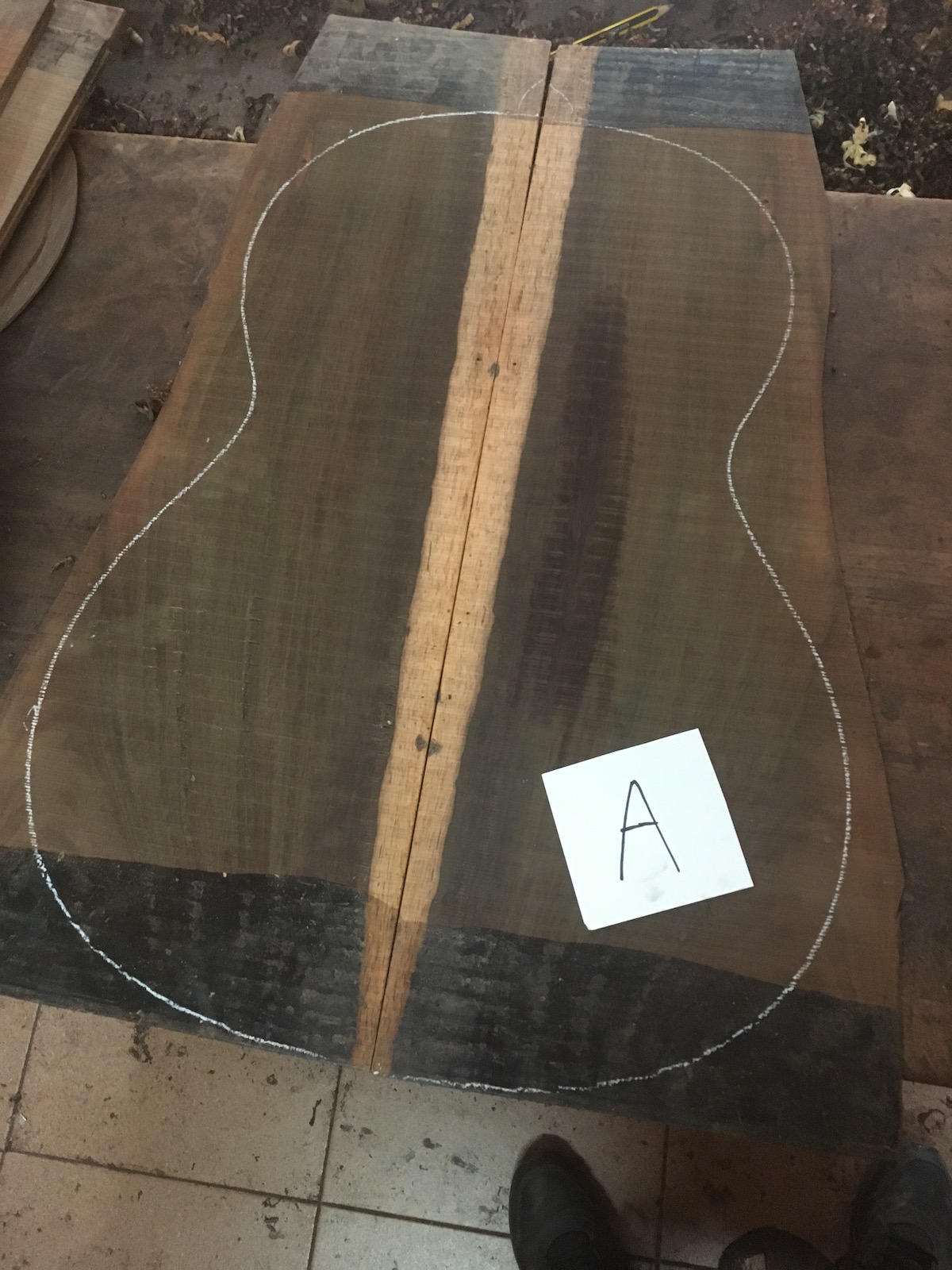
Rosettes
Which rosette do you like for your next guitar? I make my rosettes one at a time in a channel and then later install them in the top. My first attempts at installing rosettes directly resulted in considerable warping of the top and a few disasters as the wood swelled because of the moisture from the glue. These days things go quite smoothly. Bone makes a nice change from all wood rosettes and using shapes of solid wood is also a different technique. You can’t see it here but because the diamond shapes are not end grain they are very bright and shiny. I don’t often use coloured wood in my guitars but here you can see a green which contrasts with the natural red in the mosaic.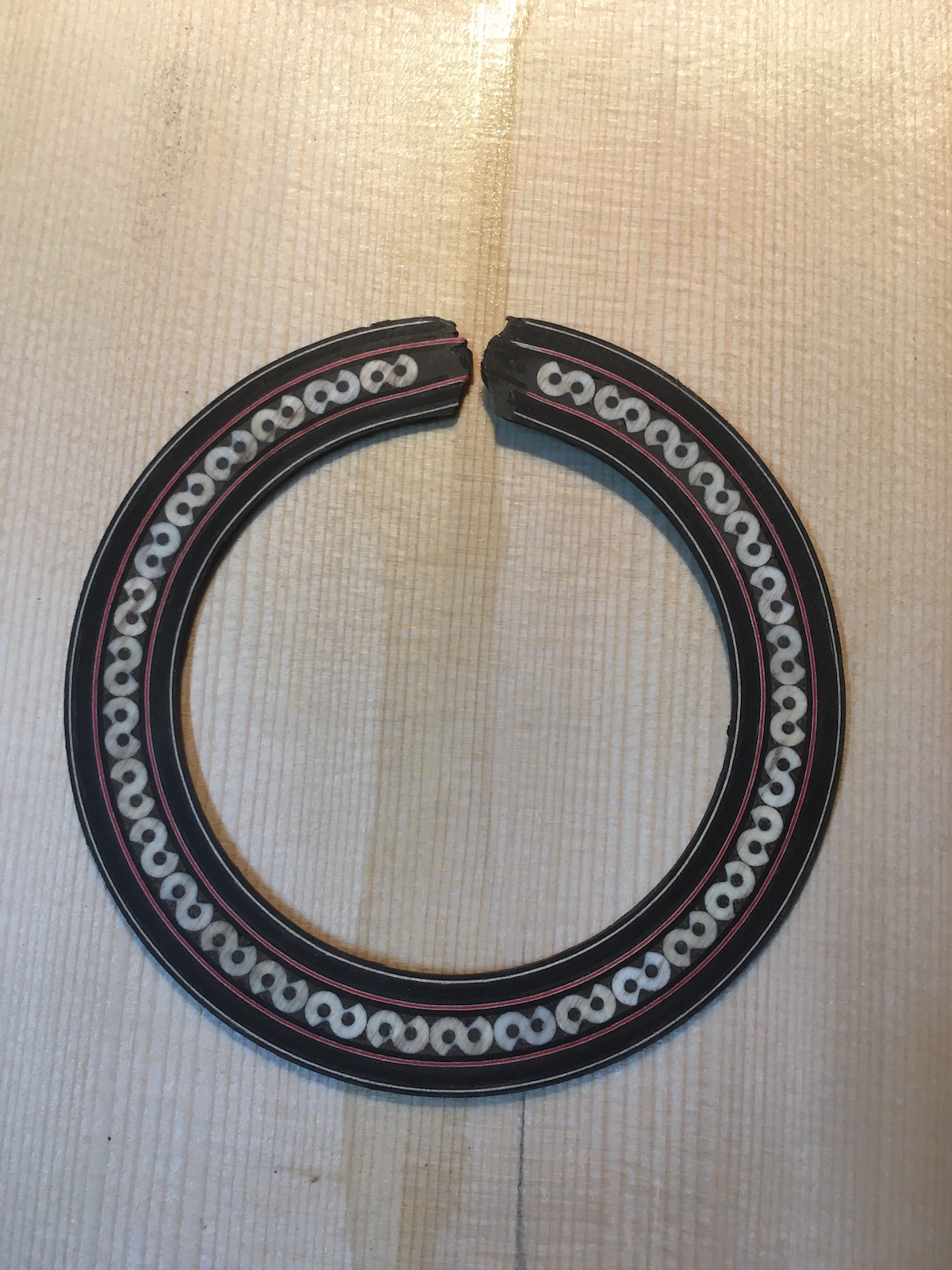
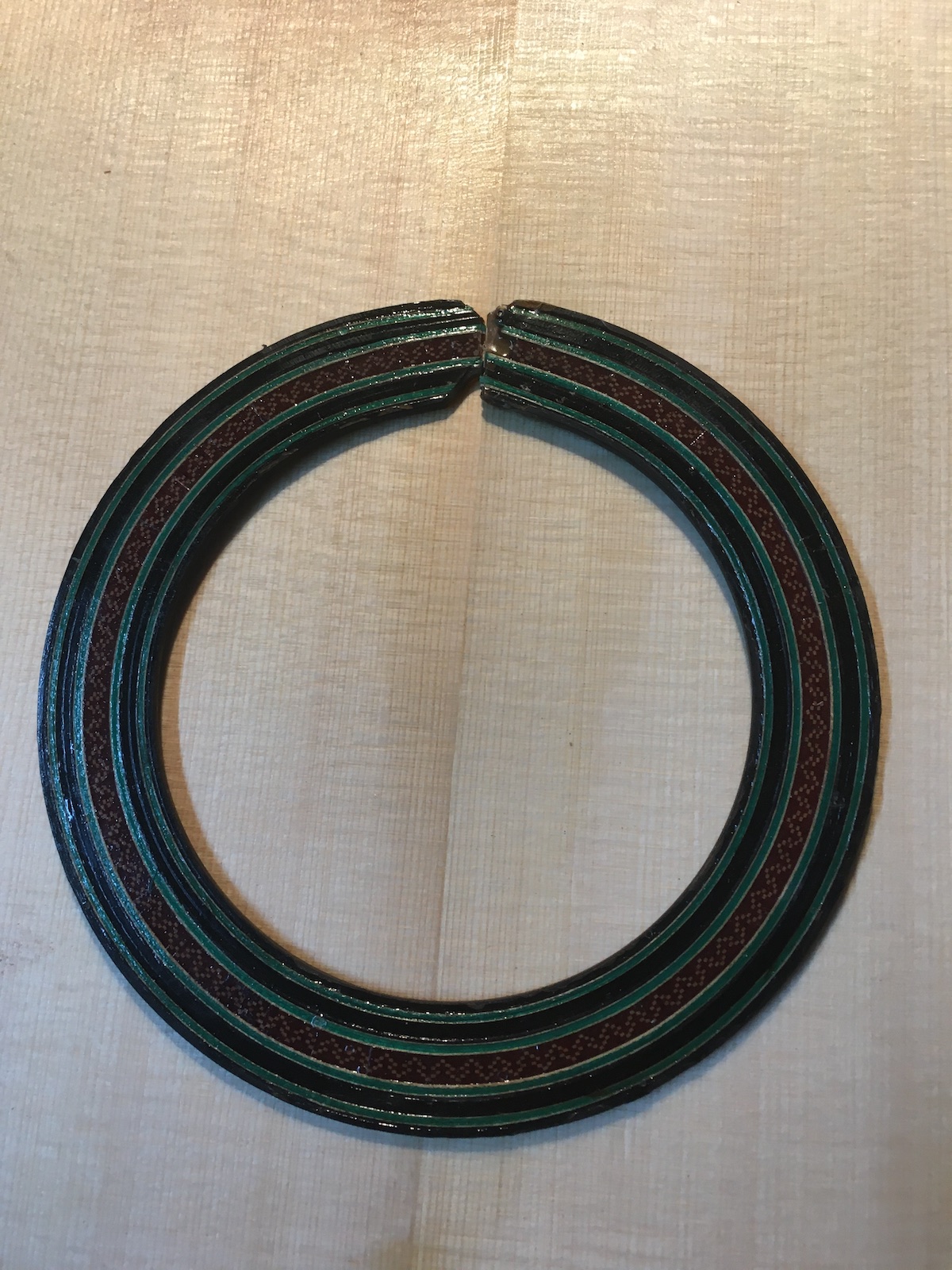
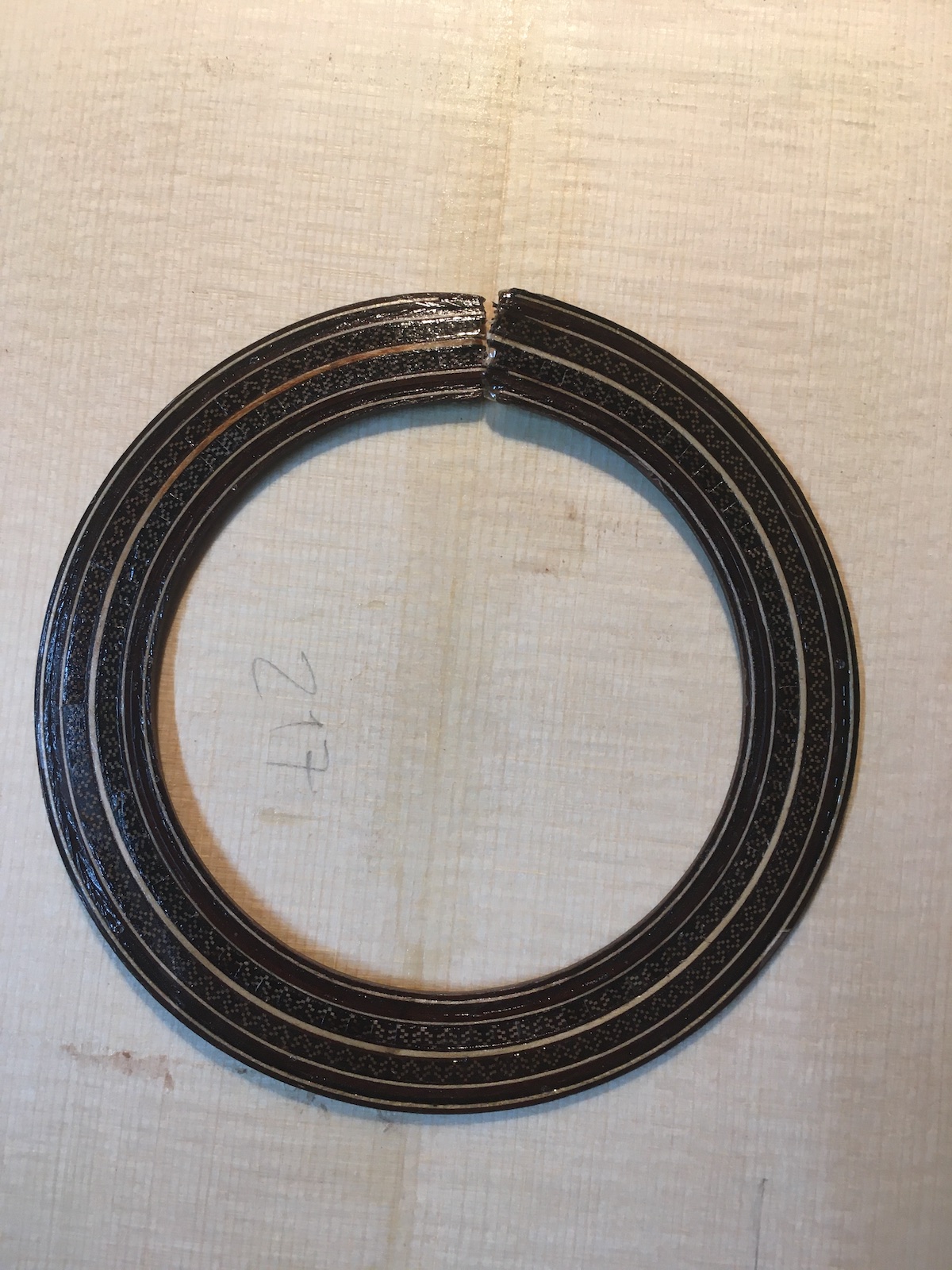
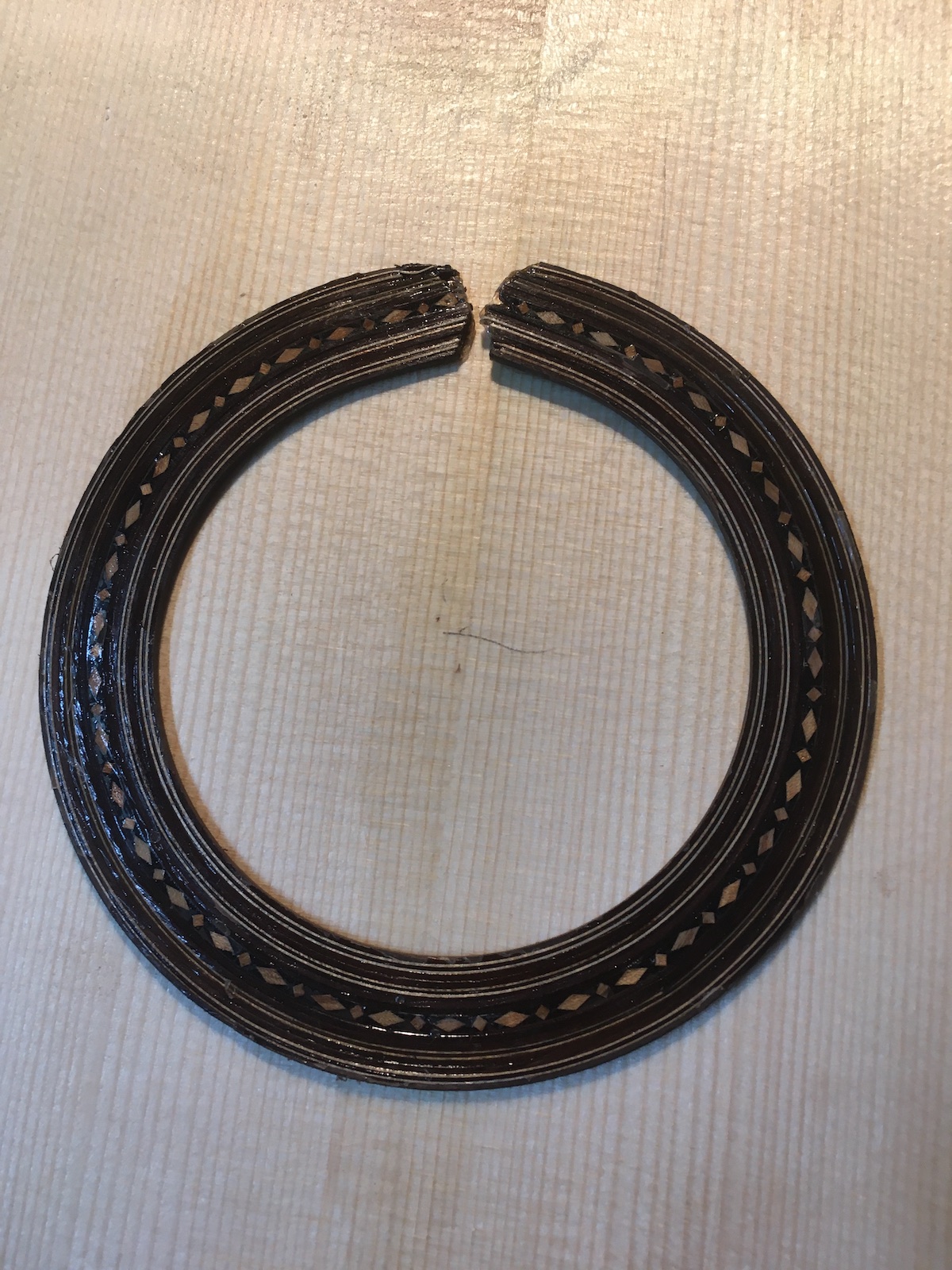
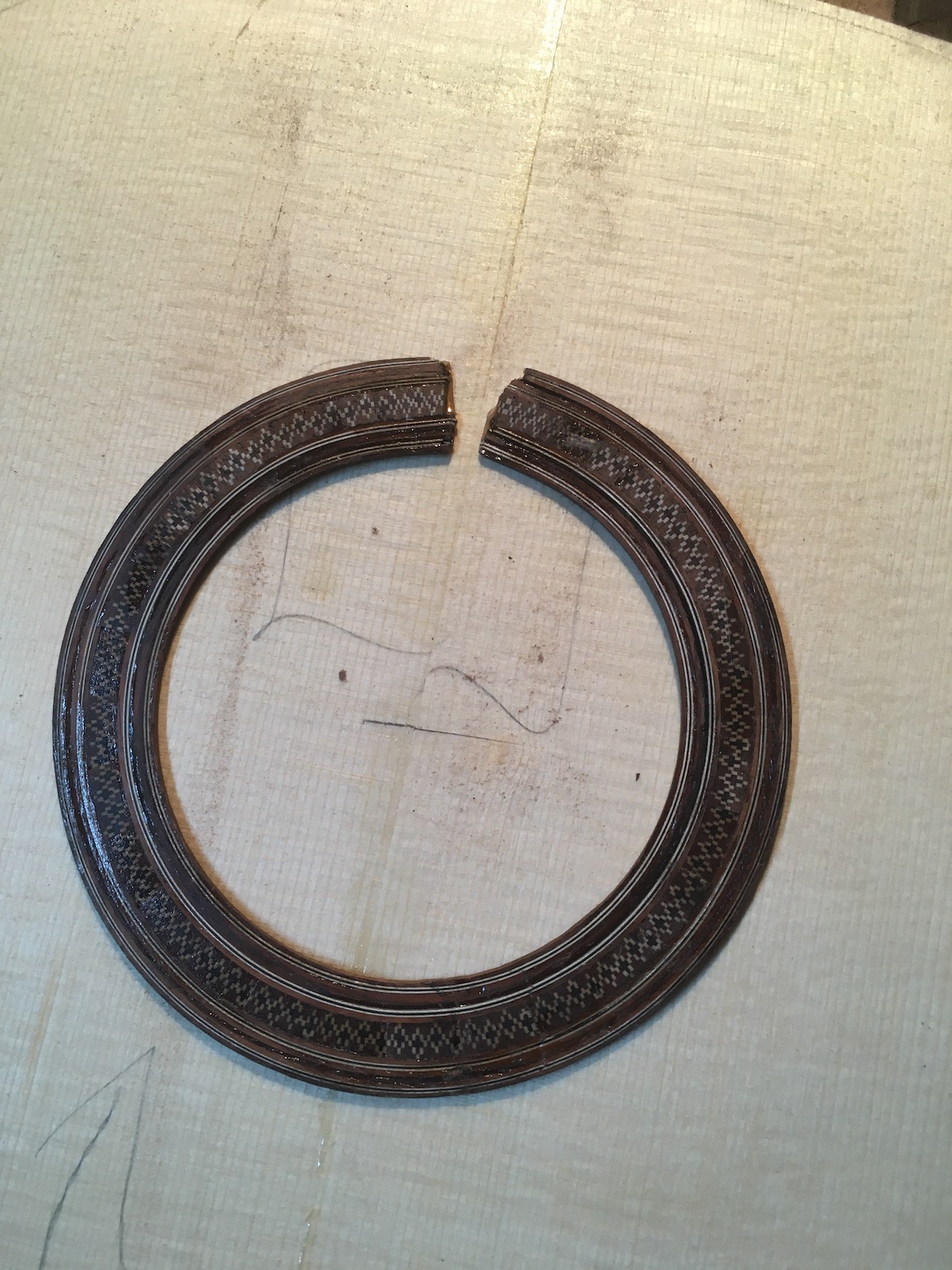
Bridges
Those who don’t make guitars have no idea how much work is represented here in this photo. Shaping rounded parts and transitioning to straight surfaces, doing inlays, fitting the bridge to the top and sealing the pores are just a few of the difficulties involved in making bridges. I suppose for the most part is is just having so many tasks in such a small space.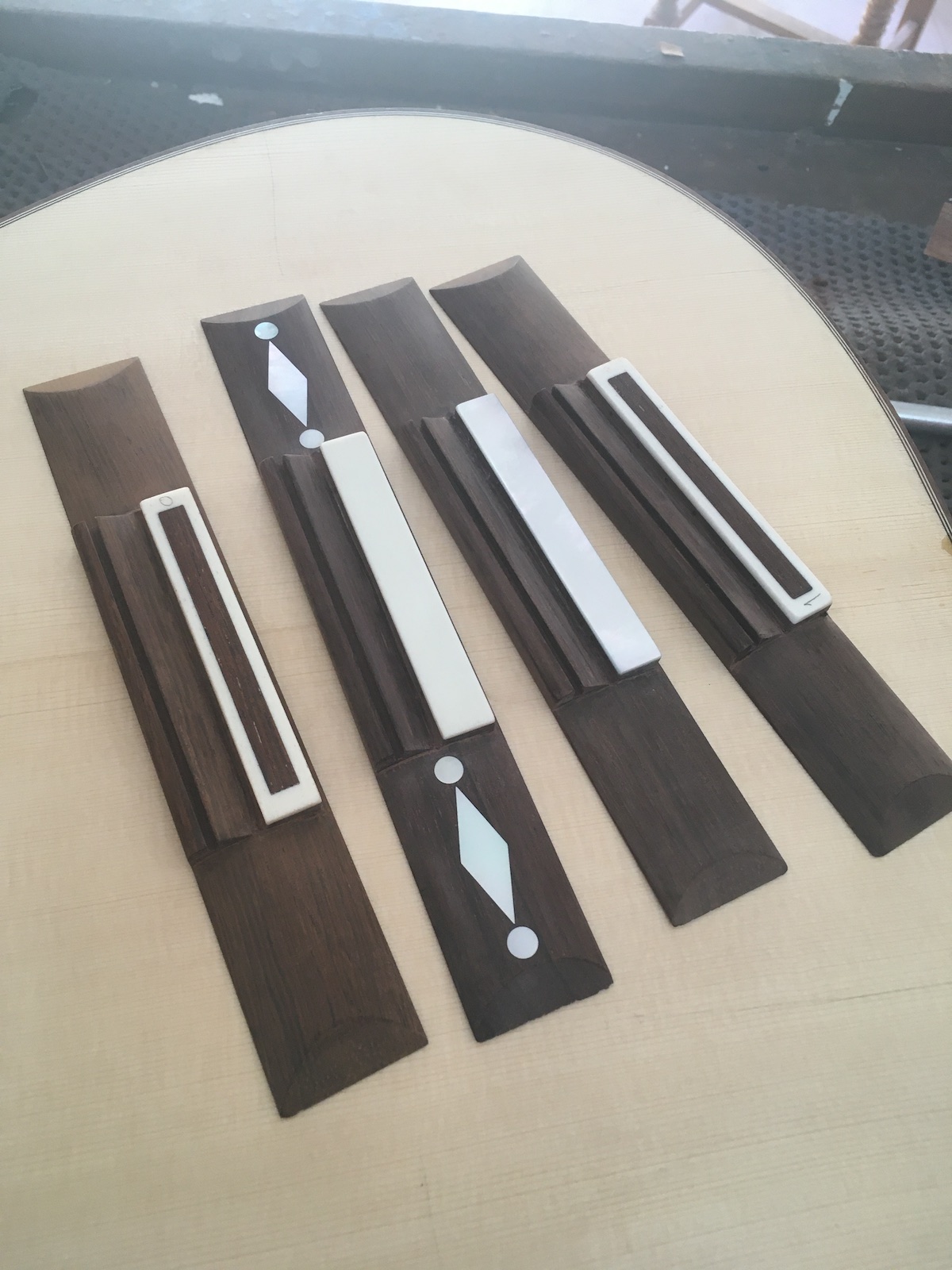
Hand Tools
 We make great use of hand tools especially planes, chisels, files and saws but also specialty tools. These can be made by the builder or made to our specifications by local metal-workers. One example of the latter is this cutting gauge which can be used to mark the binding cuts which are then chiselled out. It has a curved side for the waist and a flat side which works well for registering against the top or back. Even with more modern methods it is still often useful for achieving uniformity in the waist area.
We make great use of hand tools especially planes, chisels, files and saws but also specialty tools. These can be made by the builder or made to our specifications by local metal-workers. One example of the latter is this cutting gauge which can be used to mark the binding cuts which are then chiselled out. It has a curved side for the waist and a flat side which works well for registering against the top or back. Even with more modern methods it is still often useful for achieving uniformity in the waist area.
